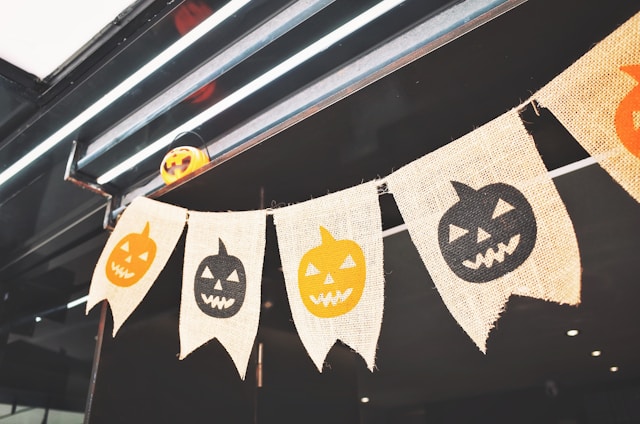Photo by Yeh Xintong on Unsplash
Origin of Halloween
Halloween originally stems from the Celts over two thousand years ago. They celebrated Samhain on October 31, marking the end of summer and the beginning of winter.
On this day, the Celts believed that the spirits would return to the human world to seek out the souls of the living, gaining rebirth in the process, which was also the only hope for the dead to return to the earthly realm. Therefore, they would light bonfires and dress up as ghosts to scare away wandering spirits, with scarier costumes being more effective.
With the advent of Christianity, this festival gradually merged with All Saints’ Day, forming today’s Halloween celebrations. Halloween refers to the eve of All Saints’ Day, which is October 31.
The core meaning of Halloween lies in commemorating the dead and warding off evil spirits. Although it initially arose from a sense of awe for the departed, over time, Halloween has transformed into a day filled with joy and celebration. Today, it symbolizes the arrival of autumn and community connection and interaction.
Halloween Activities and Customs
| Custom | Description |
|---|---|
| Trick or Treat | Children dress up as various characters and go door-to-door asking for candy. This custom originates from ancient Celtic offerings to the spirits for protection. In Scotland and Ireland, young people would visit homes to sing for treats, which evolved into today’s trick or treat. |
| Jack-o’-lantern | Pumpkins are carved into lanterns to ward off evil spirits and guide the dead home in the dark. |
| Costume Parties | People wear various costumes, from scary characters to pop culture figures, to celebrate and enjoy this special day. |
Halloween is not only a fun and creative celebration but also a reflection on history, culture, and human coexistence.
Origin of Jack-o’-lantern
Long ago, there was a stingy and rude man named Jack, who encountered Satan on Halloween night. Jack cleverly tricked Satan by trapping him in a tree and negotiating that if Satan promised not to take his soul after death, he would let him go. Satan agreed.
However, after Jack died, he could not enter heaven due to his many sins and arrived at the gates of hell. To his surprise, standing at the gates was Satan himself. Since Satan had promised not to take Jack’s soul, Jack found himself unable to enter either heaven or hell, becoming a wandering spirit doomed to roam the dark world endlessly.
Satan instructed Jack to return from where he came. Jack had no choice but to retrace his steps along a dark path buffeted by strong winds. He asked Satan for a light, and out of pity, Satan gave him a flame from hell. Without a lantern, Jack hollowed out a turnip as a substitute so he could find his way in the darkness. Thus, Jack wandered between this world and the next with that lantern, which became known as a Jack-o’-lantern.
The tradition of carving lanterns has been continued by the Irish until later Irish immigrants discovered that pumpkins were easier to carve in America, evolving into today’s jack-o’-lanterns, displayed at homes as protective charms.
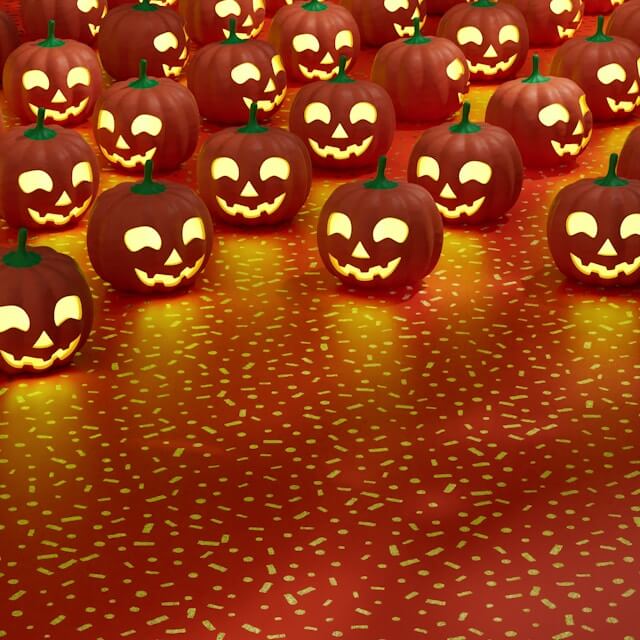
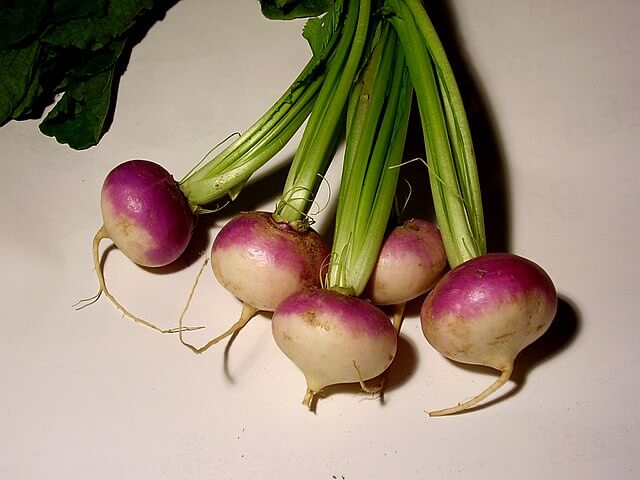
Photo by Ashleigh Shea & Igor Omilaev
What is the Origin of Halloween?
The name “Halloween” and its celebrations are deeply influenced by history and culture, reflecting an evolution from ancient religious rituals to modern festivities.
| Name | Description |
|---|---|
| Halloween | On October 31, originating from Christianity’s All Saints’ Day, which is on November 1st. This day was called All Hallows Eve, later simplified to Halloween. |
| All Hallows Eve | Refers to the eve of All Saints’ Day; “Hallows” means saints, so “Halloween” can be understood as the eve of saints. |
| All Saints’ Day | On November 1st, this is a religious holiday commemorating all saints who exemplified noble virtues during their lives. |
| Samhain | An ancient Celtic celebration marking the end of summer and beginning of winter. The Celts believed that on this day, the boundary between the living and dead became blurred as spirits returned to earth. With Christianity’s spread, this tradition gradually merged with All Saints’ Day into today’s Halloween celebrations. |
| All Souls’ Day | On November 2nd, specifically commemorating all souls; this day is often associated with Halloween. |
Symbols of Halloween
| Name | Description |
|---|---|
| Pumpkin | Commonly carved into jack-o’-lanterns symbolizing warding off evil spirits and welcoming souls. |
| Ghost Decorations | Used for decorating homes to enhance Halloween’s spooky atmosphere. |
| Skeleton | A common Halloween decoration symbolizing death and spirits. |
| Witch Hat | Represents traditional attire associated with witches, linked to magic and mystery. |
| Bat | Often used in decorations symbolizing night and mystery themes. |
| Black Cat | Traditionally seen as a witch’s companion associated with misfortune and mystery. |
| Spider Web | Used for decoration to enhance spooky ambiance. |
| Candy | Sweets that children collect during Halloween symbolizing celebration and sharing. |
How Do Different Regions Celebrate Halloween?
Halloween has evolved through cultural integration across different regions.
| Region/Country | Description |
|---|---|
| Ireland | Considered the birthplace of Halloween; holidays begin on the last Monday in October with games like Apple Bobbing and tasting fruitcake called “Barmbrack,” which often contains divination items. |
| United States | Children dress up in various costumes going door-to-door shouting “Trick or Treat.” Communities decorate homes meticulously while hosting parties and horror movie screenings. |
| Mexico | Celebrates Día de los Muertos (Day of the Dead) from October 31 to November 2, setting up altars with sugar skulls and favorite foods for welcoming back souls of the deceased. |
| Japan | Halloween is becoming popular especially in urban areas with costume parties and parades; malls and theme parks also host related events. |
| Romania | While traditionally not celebrating Halloween, Bran Castle hosts Halloween parties influenced by Count Dracula attracting many tourists. |
| Northern Ireland | Derry hosts Europe’s largest Halloween celebration annually at Banks of the Foyle featuring grand parades and haunted houses among other activities. |
| Philippines | Children participate in “Pangangaluluwâ,” singing door-to-door for candy but have also begun celebrating Halloween influenced by American culture including trick-or-treating events and costume contests. |
Who Are the Celts?
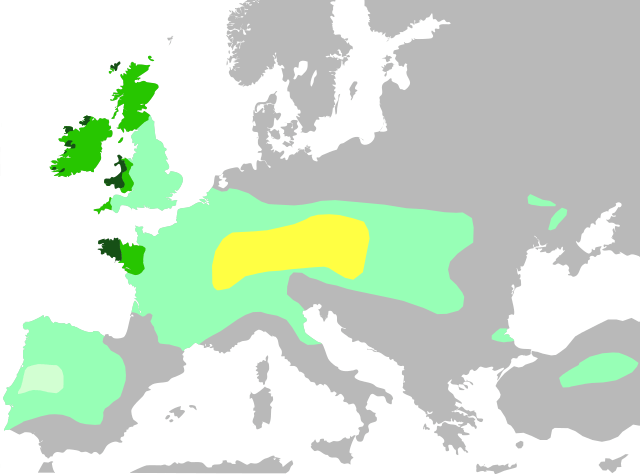
The Celts (English: Celt, /kɛlts, sɛlts/) were an ancient people who lived in Europe, primarily distributed across:
| Region | Description |
|---|---|
| Central Europe | The Celts first settled between the Rhine River and Danube River around 9th century BC; this area includes modern-day southern Germany and Austria. |
| Western Europe | Over time, they expanded westward occupying present-day France, Belgium, and Britain. The Romans referred to these Celtic tribes living in France as Gauls. |
| Southern Europe & Asia Minor | Between 4th century BC to 3rd century BC, some Celtic tribes migrated to Asia Minor forming Galatia Kingdom. |
| British Isles | Around 6th century BC, Celts entered Britain and Ireland, gradually becoming major inhabitants in these regions. |
Relationship Between Celts (Celt) and NBA Boston Celtics
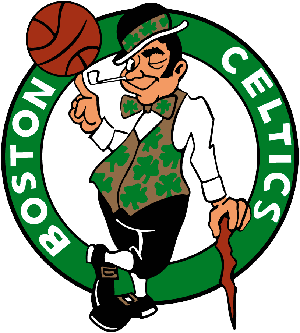
The name “Boston Celtics” derives from Celtic culture because team founder Walter Brown wanted to reflect Boston’s Irish-American community.
The Celts were an ancient people who lived primarily in Ireland and Scotland, aligning with Boston’s historical background where Celtic immigrants moved to America fleeing persecution from British rule.
Founded in 1946 as one of the original teams in the National Basketball Association (NBA), Celtics not only represented sports innovation but also reflected society’s acceptance of multiculturalism at that time.
Origin of Team Name
| Reason | Description |
|---|---|
| Celtic Culture | The name directly stems from “Celts,” emphasizing cultural roots and community identity in that region. |
| Team Colors | The team’s colors (green) symbolize Celtic culture further reinforcing this connection. |
Reference
- 萬聖夜 - 維基百科,自由的百科全書
- 不給糖就搗蛋 - 維基百科,自由的百科全書
- 為什麼萬聖節要提南瓜燈、不給糖就搗蛋?3個鮮為人知的萬聖節習俗由來,你一定要知道-風傳媒
- 萬聖節的起源是什麼?
- 只知道不給糖就搗蛋?認識萬聖節(Halloween)的由來|方格子 vocus
- 探尋萬聖節的起源!南瓜燈與扮裝背後的故事是?|THE GATE|日本旅遊觀光雜誌・提供觀光旅遊信息
- 蕪菁 - 維基百科,自由的百科全書
- 【節慶英文】Trick or Treat!你知道萬聖節的由來嗎?萬聖節必學英文單字片語 | Engoo線上英文
- 揭秘全球6國萬聖節「搞鬼」怎麼玩!風土民情大不同
- 萬聖節及世界各地的鬼節傳統 - QQEnglish | English language School
- 死亡並非終點。七個國家、七種文化帶你看「萬聖節的真正意義」 | Tatler Asia
- 凱爾特人 - 維基百科,自由的百科全書
- 北美四大職業運動球隊隊名&吉祥物起源 NBA東區篇 - NBA - 籃球 | 運動視界 Sports Vision
- 波士頓塞爾提克 - 維基百科,自由的百科全書
